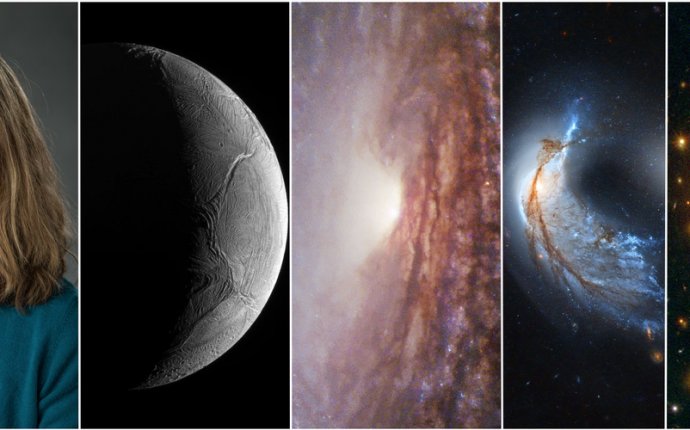
Astronomy Degree Requirements
* ASTR 030a, Search for Extraterrestrial Life Michael Faison
Introduction to the search for extraterrestrial life. Review of current knowledge on the origins and evolution of life on Earth; applications to the search for life elsewhere in the universe. Discussion of what makes a planet habitable, how common these worlds are in the universe, and how we might search for them. Survey of past, current, and future searches for extraterrestrial intelligence. Enrollment limited to freshmen. Preregistration required; see under Freshman Seminar Program. WR, SC
ASTR 105a, The Earth in its Cosmic Context Gregory Laughlin
Study of the formation, evolution, and history of Earth, its solar system, and its role in a larger cosmic context. Consideration of thousands of other recently discovered planetary systems; the role of life in shaping the Earth and its environment; and the consequences of human activity from a systems perspective.
ASTR 110b, Planets and Stars Michael Faison
An introduction to stars and planetary systems. Topics include the solar system and extrasolar planets, planet and stellar formation, and the evolution of stars from birth to death. No prerequisite other than a working knowledge of elementary algebra. QR,
ASTR 120a, Galaxies and the Universe Jeffrey Kenney
An introduction to stars and stellar evolution; the structure and evolution of the Milky Way galaxy and other galaxies; quasars, active galactic nuclei, and supermassive black holes; cosmology and the expanding universe. No prerequisite other than a working knowledge of elementary algebra. ,
ASTR 130a, Origins and the Search for Life in the Universe Debra Fischer
Origins of the universe, stars, and planets; evolution of conditions that were conducive to the emergence of life on Earth; leading theories for the origin of life; the discovery of exoplanets; comparison of Earth's solar system with other systems that have been discovered; the possibility of habitable conditions where life might have arisen on other worlds; methods of searching for life elsewhere. No prerequisite other than a working knowledge of elementary algebra.
[ ASTR 135, Archaeoastronomy ]
ASTR 155a, Introduction to Astronomical Observing Michael Faison
A hands-on introduction to the techniques of astronomical observing. Observations of planets, stars, and galaxies using on-campus facilities and remote observing with Yale's research telescopes. Use of electronic detectors and computer-aided data processing. Evening laboratory hours required. One previous college-level science laboratory or astronomy course recommended. ½ Course cr
ASTR 156b / ENAS 156b, Introduction to Digital Dome Media Michael Faison
The design and production of planetarium shows, art projects, or other immersive or interactive projects with a digital dome projection system, including the ScidomeHD digital system and the stereo projector system, both located at the Leitner Family Observatory and Planetarium (LFOP) and with the portable Starlab dome. Topics include real-time and scripted control of 3D graphics engines; mapping of images and video onto a spherical dome; 3D rendering using Blender, Processing, and vpython; audio and video editing for dome content; interactive projects; and basic design principles for narrative and interactive educational shows. Some programming or digital media experience is recommended. ½ Course cr
ASTR 160b, Frontiers and Controversies in Astrophysics Marla Geha
A detailed study of three fundamental areas in astrophysics that are currently subjects of intense research and debate: planetary systems around stars other than the sun; pulsars, black holes, and the relativistic effects associated with them; and the age and ultimate fate of the universe. No prerequisite other than a working knowledge of elementary algebra. ,
[ ASTR 170, Introduction to Cosmology ]
ASTR 210b, Stars and Their Evolution Robert Zinn
Foundations of astrophysics, focusing on an intensive introduction to stars. Nuclear processes and element production, stellar evolution, stellar deaths and supernova explosions, and stellar remnants including white dwarfs, neutron stars, and black holes. A close look at our nearest star, the sun. How extrasolar planets are studied; the results of such studies. Prerequisite: a strong background in high school calculus and physics. May not be taken after . ,











